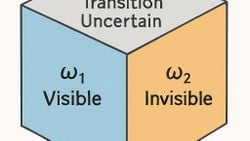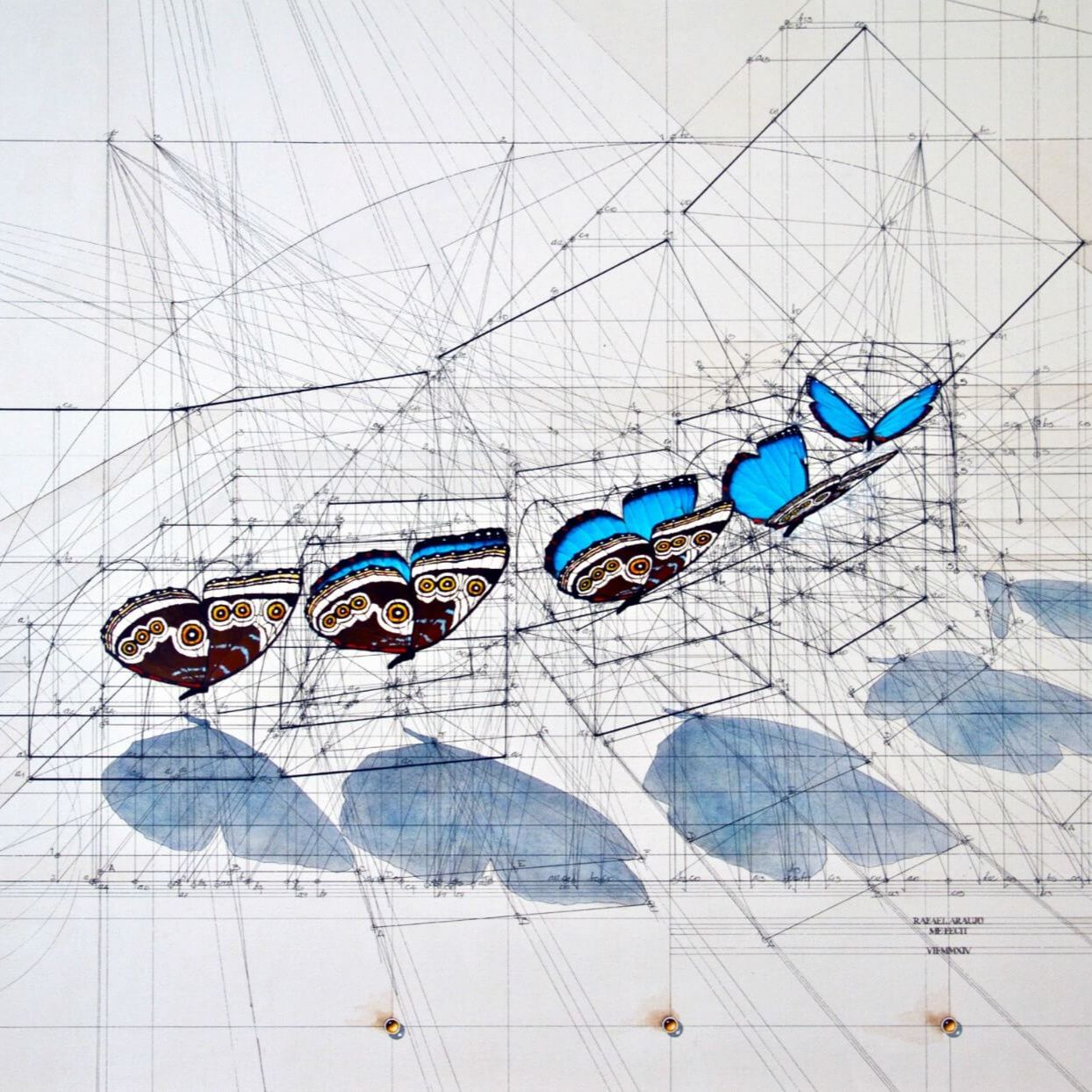Triple Event Space Theory (TEST): A Unified Framework for Observation, Entropy, and Reality
Physics

- Blog Yazısı
Abstract
This paper explores the Triple Event Space Theory (TEST), a philosophical and scientific framework proposing that all observable events consist of three core possibilities: visible, hidden, and transitional (entropic) outcomes. The theory is evaluated through examples from quantum physics, classical systems, biological evolution, and metaphysics.
1. Introduction
TEST, originally proposed by Hakan Halit Hatipoğlu, asserts that no event can be fully described with fewer than three epistemic possibilities. This model incorporates the seen (ω1), unseen (ω2), and uncertain or transitional (ω3) outcomes. The framework aims to offer insights into quantum behavior, complex systems, and even philosophical questions.
2. Core Framework of TEST
In any observed event:
- ω1: Visible — the directly observed or measurable outcome.
- ω2: Invisible — the complementary outcome that is not observed but logically inferred.
- ω3: Transitional — the ambiguous, probabilistic or entropic component.
TEST proposes that all phenomena possess these three aspects to varying degrees.
3. Applied Analogy: Coin Toss
Aslında maddi destek istememizin nedeni çok basit: Çünkü Evrim Ağacı, bizim tek mesleğimiz, tek gelir kaynağımız. Birçoklarının aksine bizler, sosyal medyada gördüğünüz makale ve videolarımızı hobi olarak, mesleğimizden arta kalan zamanlarda yapmıyoruz. Dolayısıyla bu işi sürdürebilmek için gelir elde etmemiz gerekiyor.
Bunda elbette ki hiçbir sakınca yok; kimin, ne şartlar altında yayın yapmayı seçtiği büyük oranda bir tercih meselesi. Ne var ki biz, eğer ana mesleklerimizi icra edecek olursak (yani kendi mesleğimiz doğrultusunda bir iş sahibi olursak) Evrim Ağacı'na zaman ayıramayacağımızı, ayakta tutamayacağımızı biliyoruz. Çünkü az sonra detaylarını vereceğimiz üzere, Evrim Ağacı sosyal medyada denk geldiğiniz makale ve videolardan çok daha büyük, kapsamlı ve aşırı zaman alan bir bilim platformu projesi. Bu nedenle bizler, meslek olarak Evrim Ağacı'nı seçtik.
Eğer hem Evrim Ağacı'ndan hayatımızı idame ettirecek, mesleklerimizi bırakmayı en azından kısmen meşrulaştıracak ve mantıklı kılacak kadar bir gelir kaynağı elde edemezsek, mecburen Evrim Ağacı'nı bırakıp, kendi mesleklerimize döneceğiz. Ama bunu istemiyoruz ve bu nedenle didiniyoruz.
Using a coin toss:
- ω1: The upper face (e.g., heads).
- ω2: The hidden bottom face (e.g., tails).
- ω3: The rare event of the coin landing on its edge, representing the uncertain or transitional state.
4. Quantum Mechanics and TEST
In the double-slit experiment:
- ω1: Particle passes through one slit (visible path).
- ω2: Particle passes through the other slit (hidden path).
- ω3: If unobserved, a superposition of both paths leads to an interference pattern — the entropic or transitional state.
Observation collapses this state to either ω1 or ω2.
5. Entropy and Transitional Events
In TEST, entropy growth correlates with ω3. A particle gains uncertainty over time and space. Entropy drives transitional states and is critical in defining probability weight among ω1, ω2, and ω3.
6. Biological Evolution and Mutation
In genetics:
- ω1: Trait inherited from the mother.
- ω2: Trait from the father.
- ω3: Mutation — the entropic, rare yet evolution-driving outcome.
7. Positive, Negative, Natural, and Transitional Events
Based on the relative dominance of ω1, ω2, and ω3:
- Positive: ω1 > ω2
- Negative: ω2 > ω1
- Natural: ω1 ≈ ω2 (e.g., quantum spin entanglement)
- Transitional: ω3 > ω1 and ω2 (e.g., unobserved double-slit experiment).
8. Philosophical Parallels
Examples:
- Theological: God exists (ω1), God doesn't exist (ω2), God's existence is unknowable (ω3).
- Chinese philosophy: Yin (ω1) and Yang (ω2) each contain seeds of the other, representing ω3 — dynamic transition and balance.
9. Mathematical Reflection
Numbers can also reflect TEST:
- ω1: Real number (observable)
- ω2: Complex (not directly measurable)
- ω3: Infinity or zero (representing epistemic uncertainty)
10. Temporal Entropic Interference
Two particles fired in succession behave like a double-slit in time:
- As entropy increases, they expand and interfere
- Observation collapses the system into distinct outcomes.
11. Implications and Future Work
The practical development of TEST requires assigning relative weights or probabilities to ω1, ω2, and ω3 across different domains. Entropy, temporal distance, and observational capacity may offer models for determining this.
References
1. Schrödinger, E. (1935). "The Present Situation in Quantum Mechanics." Naturwissenschaften.
2. Feynman, R. P., Leighton, R. B., & Sands, M. (1965). The Feynman Lectures on Physics.
3. Heisenberg, W. (1927). "On the perceptual content of quantum theoretical kinematics and mechanics." Z. Phys.
4. Darwin, C. (1859). On the Origin of Species.
5. Laozi. Tao Te Ching.
6. Prigogine, I. (1980). From Being to Becoming: Time and Complexity in the Physical Sciences.
- 0
- 0
- 0
- 0
- 0
- 0
- 0
- 0
- 0
- 0
- 0
- 0
Evrim Ağacı'na her ay sadece 1 kahve ısmarlayarak destek olmak ister misiniz?
Şu iki siteden birini kullanarak şimdi destek olabilirsiniz:
kreosus.com/evrimagaci | patreon.com/evrimagaci
Çıktı Bilgisi: Bu sayfa, Evrim Ağacı yazdırma aracı kullanılarak 18/12/2025 04:33:21 tarihinde oluşturulmuştur. Evrim Ağacı'ndaki içeriklerin tamamı, birden fazla editör tarafından, durmaksızın elden geçirilmekte, güncellenmekte ve geliştirilmektedir. Dolayısıyla bu çıktının alındığı tarihten sonra yapılan güncellemeleri görmek ve bu içeriğin en güncel halini okumak için lütfen şu adrese gidiniz: https://evrimagaci.org/s/20617
İçerik Kullanım İzinleri: Evrim Ağacı'ndaki yazılı içerikler orijinallerine hiçbir şekilde dokunulmadığı müddetçe izin alınmaksızın paylaşılabilir, kopyalanabilir, yapıştırılabilir, çoğaltılabilir, basılabilir, dağıtılabilir, yayılabilir, alıntılanabilir. Ancak bu içeriklerin hiçbiri izin alınmaksızın değiştirilemez ve değiştirilmiş halleri Evrim Ağacı'na aitmiş gibi sunulamaz. Benzer şekilde, içeriklerin hiçbiri, söz konusu içeriğin açıkça belirtilmiş yazarlarından ve Evrim Ağacı'ndan başkasına aitmiş gibi sunulamaz. Bu sayfa izin alınmaksızın düzenlenemez, Evrim Ağacı logosu, yazar/editör bilgileri ve içeriğin diğer kısımları izin alınmaksızın değiştirilemez veya kaldırılamaz.










